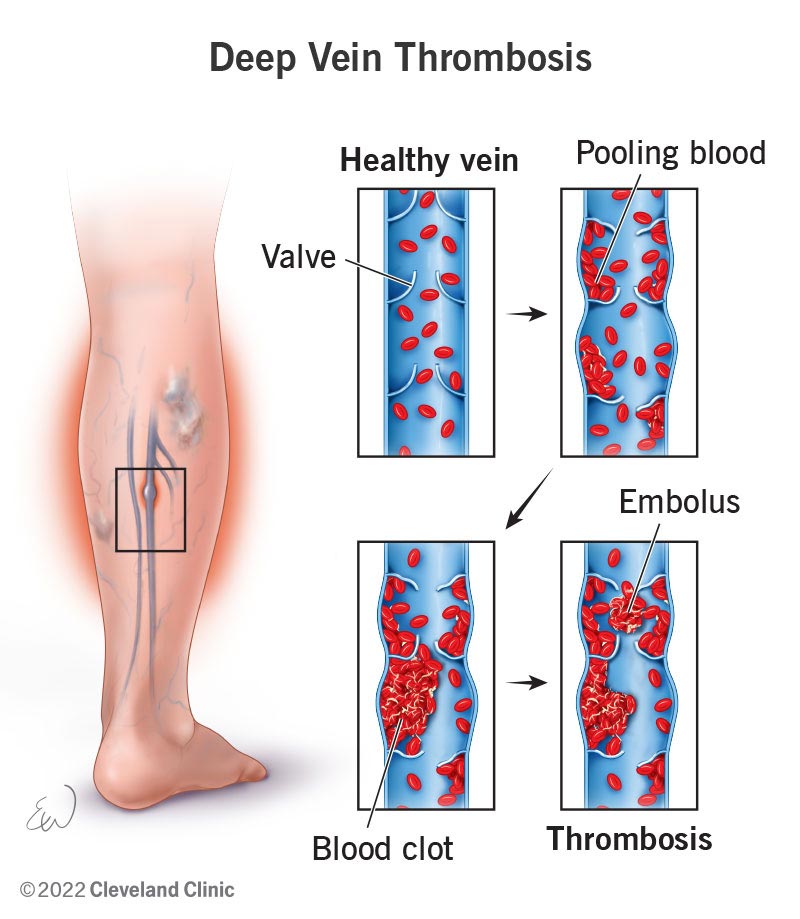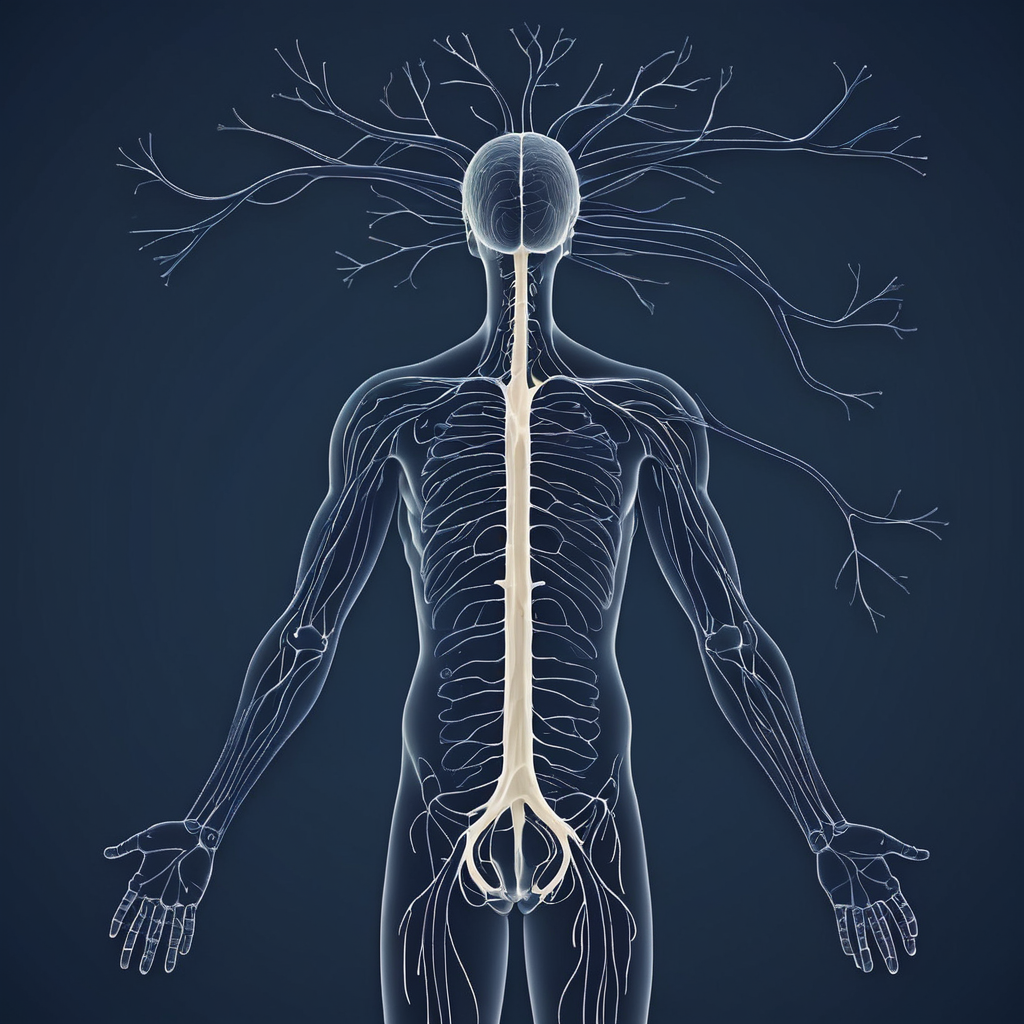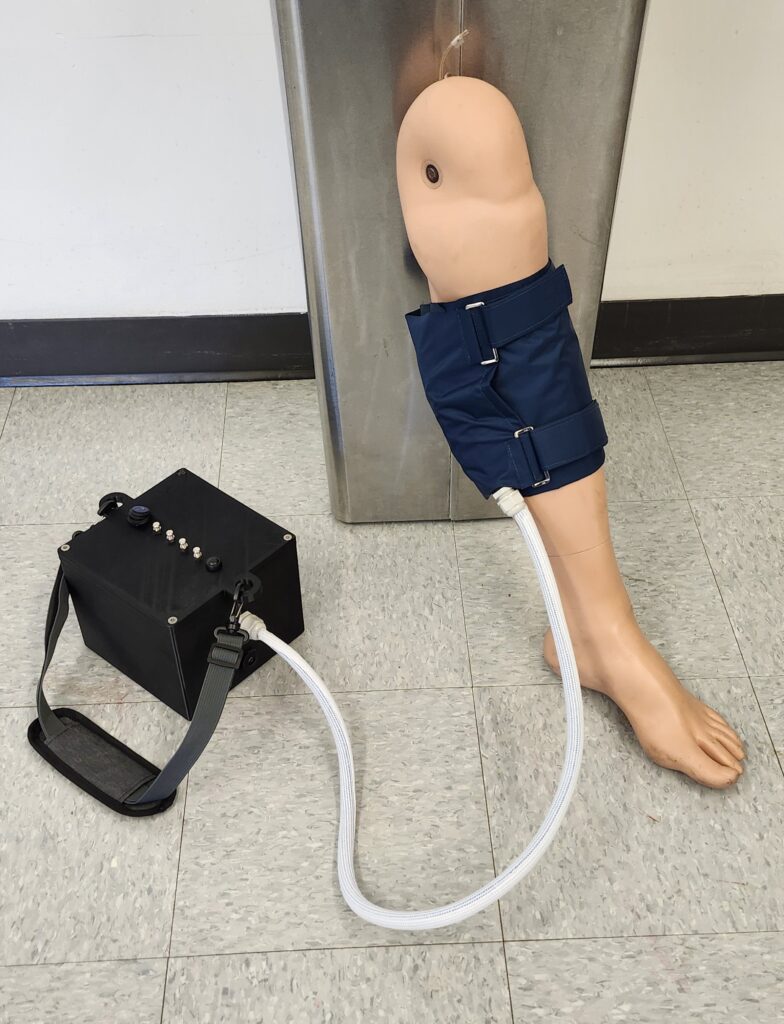The PTP:
Pressure Thrombosis Prevention
A one-of-a-kind medical device to
prevent the formation of deadly blood clots.
Why blood clot prevention?
Deep Vein Thrombosis (DVT) is a potentially fatal medical condition caused by the formation of blood clots in the veins of the lower leg, generally within the calf. If a DVT becomes dislodged, it can travel through the circulatory system to the heart, lungs, or brain potentially resulting in cardiac arrest, pulmonary embolism, or a stroke. All of these outcomes pose a significant and potentially fatal risk to the patient.
DVT’s are the third most common vascular disease in the United States and are responsible for roughly 300,000 deaths each year in the United States alone. They are generally caused by patients remaining stationary or bedridden for long periods of time, such as that required for pre and post operative in-patient care. Since infirmities developed because of in-patient care are generally a hospital’s responsibility to treat at no cost to the patient, DVT’s have become a significant drain on hospital staff and resources.

The need
The products currently available for the prevention and treatment of DVT’s are ineffective, as evidenced by the continual prevalence and severity of DVT’s. The two families of products commercially available for the treatment of DVT’s are compression socks and inflatable, single-bladder compression sleeves, both of which use light compression to improve circulation. These products provide 20-50mmHg of compression, which is ineffective at preventing DVT’s based on their continued prevalence. Manual massaging, however, has been shown effective in the prevention of DVT’s, though no product currently exists which combines automated mechanical massaging with compression.

Our product
The aim of our group is to produce a first-of-its-kind compression sock which uses targeted pressure application through three inflatable air bladders placed along the gastrocnemius muscle bellies. This localized compression of 80-120mmHg would provide the necessary mechanical massaging of the posterior calf to effectively work to prevent the formation of DVTs. A small, portable housing (pictured below) will house the battery powered electrical components of the device and provide a simple user interface. After switching the device on, the user will be able to toggle through four different pressure and time settings with the use of a pushbutton to choose the setting most applicable to their medical need. Arduino controlled logic will then inflate the bladders sequentially to the desired pressure for the selected amount of time, housed within a comfortable, adjustable sleeve (pictured below), and massage the posterior calf in a rolling-pin motion to promote blood flow.
